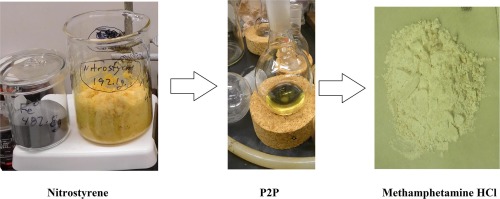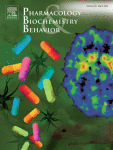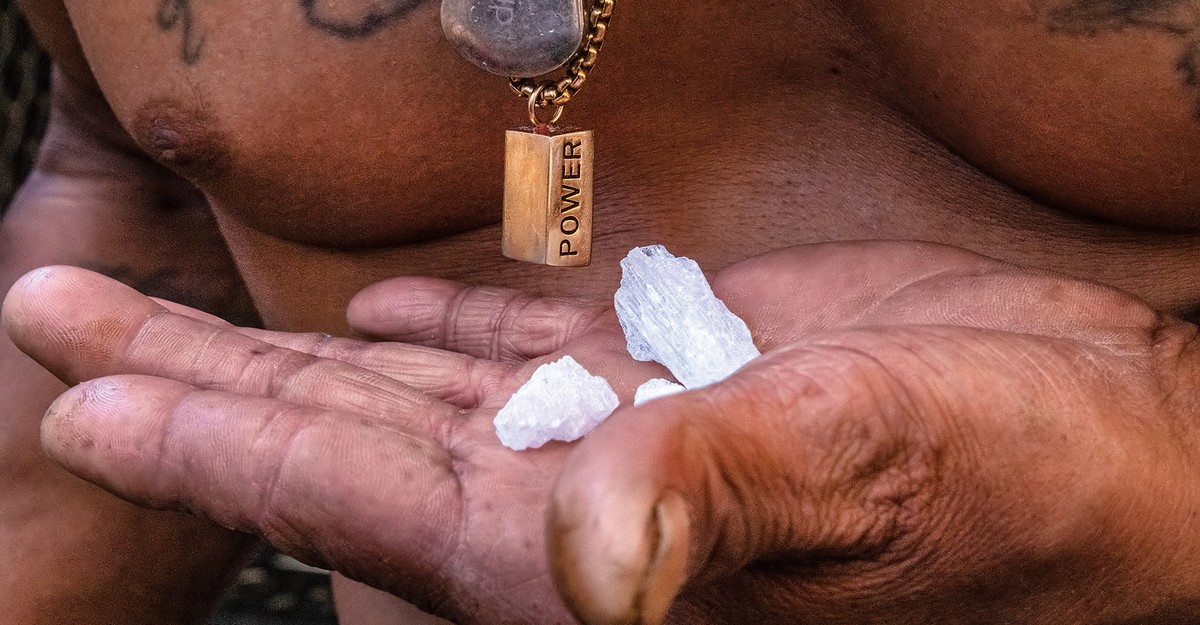I’d like to further entertain the idea Meth in the US has changed somehow. Before I continue I hope this isn’t a repeat but I tried looking a bit to not find anything.
It appears there has been over the past 5yrs a shift in the way p2p is produced to the nitrostyrene method. Producing two impurities unique to the nitrostyrene route, N-butylamphetamine and N-cyclohexylamphetamine.
“Methamphetamine profiling data is then presented to show that nitrostyrene related profiles have been dominant in the United States for the last 3 years.” (As of 2019.)
N-butylamphetamine and N-cyclohexylamphetamine have been found to be useful target compounds for tracking P2P-based methamphetamine produced using nit…

www.sciencedirect.com
And some more info from another article..
“The emergence of
N-butylamphetamine and
N-cyclohexylamphetamine in seized MA has recently triggered the nitroalkene chemistry. The two impurities result from a Knoevenagel reaction of benzaldehyde and nitroethane to form a nitrostyrene.
Toske et al. referred to this method as a nitrostyrene method (NTS) or a nitropropene method. The catalytic activities of butylamine/cyclohexylamine influence the conversion of the P2P precursors. The catalysts react with benzaldehyde to form imine, which then reacts with the nitroalkane to form a nitrostyrene as an intermediate. The reaction mixture at this step contains nitrostyrene and extractable cyclohexylamine/butylamine with a significant reaction potential. Based on a reaction proposed by Hass et al., nitrostyrene converts to P2P in the presence of iron powder and hydrochloric acid. The extractable cyclohexylamine/butylamine can then react with P2P to form the stable
N-butylamphetamine, and
N-cyclohexylamphetamine elucidated in MA seizures.
Since 2015, the two impurities were detected in MA seizures collected in the USA. The identification of the two impurities has been fundamental in tracking the P2P based MA synthesized by the nitrostyrene chemistry.” (As of 2020.)
Forensic intelligence of synthetic illicit drugs suffers a problem of continuous introduction of new synthetic methods, modification of the existing routes of manufacture, and adulterations practiced by criminal networks. Impurity profiling has been ...

www.ncbi.nlm.nih.gov
Now I couldn’t find info on what concentrations these impurities are found out and there is scant info regarding pharmacology but I did find this..
d-N-Alkylated amphetamines were synthesized in a series up to and including d-N-butylamphetamine and potencies of these compounds were compared in (1)…

www.sciencedirect.com
To boil down what I’m reading in this article, n-butylamphetamine was the weakest of all the substituted Amphetamines tested. Of the bunch it was the only one that didn’t increase the rate of the guinea pig atria and wasn’t very reinforcing.
But despite it not increasing atria rate like all the other Amphetamines it was 16x more potent to reduce rats milk intake compared to Amphetamine or Meth.
I know I’m extrapolating a great deal here but this impurity sounds like a great anorexic but a horrible recreational drug. Especially if we compare to the few other butyl Amphetamines known to exist like MDBU which was pretty much inactive.
Bupropion is a chloro substituted butylcathinone, an NDRI. It seems the butyl sub makes for reuptake inhibitors which don’t often play well with releasers.
So there we have evidence for psychoactive impurities that may potentially weaken the meth high, and seems to correspond with all these users complaining of changes. I don’t personally use it enough or enough different batches to yet know but felt it interesting this recent emergence of impurities matches fairly well with the timeline individuals on here have talked about.
-GC







